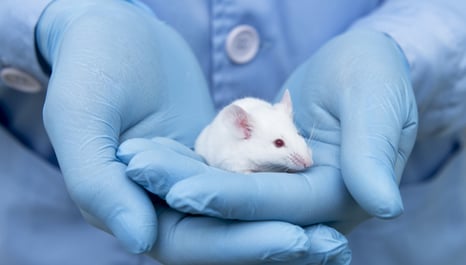
Acute toxicity testing is used to evaluate the effect of a single dose of a drug using two distinct animal species (one rodent and one nonrodent). Acute toxicity testing involves administering the investigational drug at various dosage levels and observing the impact for 14 days. All mortalities produced by the drug are documented throughout the study period, as are the morphological, biochemical, pathological, and histological alterations in the deceased animals. Acute toxicity testing enables the determination of the experimental drug's 50% lethal dose (LD50). In recent years, several variations of acute toxicity testing have been developed.
- The fixed-dose procedure (FDP): The FDP is used to determine nonlethal toxicity. The investigational drug is given at set doses of 5, 50, 500, and 2000 mg/kg, and the animal is monitored for a defined length of time.
- The acute toxic class (ATC) method: The ATC technique is a sequential process that employs three identical sexed animals in each stage. Four predetermined beginning doses are used, and the test dosages are determined using the Globally Harmonized Classification system.
- The up-and-down (UDP) method: UDP testing is often referred to as the staircase design. Regulatory authorities suggest using UDP method as it minimizes the use of vertebrate animals in research. The UDP screening technique entails successive dosing of single animals at 48-hour intervals, preferably with female rats. A dosage smaller than the best-estimated LD50 dose is chosen and given to an animal, followed by 48 hours of observation. If the animal lives, the research is repeated at a larger dosage (double the first dose); if the animal dies, testing is resumed at a lesser dose using another animal of the same sex as the original animal. The testing of UDP is restricted to dosages of up to 2000 mg/kg. The testing methods for dosages ranging from 2000 to 5000 mg/kg are distinct
The primary goal of repeated-dose toxicity studies is to characterize the adverse toxicological effects occurring because of repeated daily dosing with, or exposure, to a substance for a specified period up to the expected lifespan of the test species (usually from 3 weeks up to 2 years in animal studies). Effects include changes in morphology, physiology, growth or life span, clinical chemistry, and behavior. The repeated-dose toxicity studies are essential for the quantitative risk assessment of drug molecules. The studies yield information on general characteristics of the toxicity, the toxicity to specific target organs, the dose-response relationship, responses to toxic metabolites formed in the organism, delayed responses, cumulative effects, and information on reversibility/irreversibility of the effect.
Typically, a NOAEL or LOAEL can be obtained from repeated dose toxicity studies.
- No Observed Adverse Effect Level (NOAEL) refers to the highest exposure level at which there are no biologically significant increases in the frequency or severity of adverse effect between the exposed population and its appropriate control; some effects may be produced at this level, but they are not considered adverse effects.
- Lowest Observed Adverse Effect Level (LOAEL) refers to the lowest exposure level at which there are biologically significant increases in frequency or severity of adverse effects between the exposed population and its appropriate control group.
Noble Life Sciences' established experience in toxicology testing guarantees that you have comprehensive safety testing results to support the advancement of your program. Our team of experts is well-equipped to collaborate on the general principles and designs of your toxicology tests, including the species to be tested, the size of the treatment group, the duration of treatment, the frequency of administration, and the route of administration, as well as relevant in-life observations and terminal endpoints based on the properties of your test article and intended clinical use.
For more information, visit www.noblelifesci.com, or contact us at info@noblesci.com
